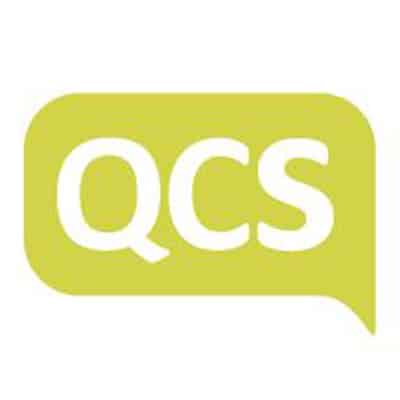What is Proxy Access?
People can use online services for booking appointments, ordering repeat prescriptions, and to view information that their GP practice holds about them in their Patient record. People can also choose to give another person access to their GP online services on their behalf which is called ‘proxy access’.
NHS England have published a guide to support best practice for CQC registered care homes and GP Practices to work together to allow care home staff to order online repeat medication on behalf of residents. Unfortunately, not all GP IT systems currently have the function to allow proxy access to be set up, so care homes will need to check with their local GP Practice if this is available yet.
How Does Proxy Access Work?
It allows someone other than the Patient, such as a care home, to access and manage parts of the Patient’s GP online services account which can include ordering repeat prescriptions and sending a note to the Patient’s GP. For security, the proxy is given their own online access account and not the Patient’s own login details.
A useful information leaflet for care home staff is available.
As well as ordering medication, GP online services can give access to a resident/patient’s medical record, test results, hospital and other correspondence, and appointment booking/cancelling. GP practices can also set up proxy access to repeat medications only, which means care home staff cannot see anything else in the Patient’s record. Further guidance is available from the Royal College of General Practitioners (RCGP).
If, however, a resident does not want care home staff to have proxy access to any part of their record, including repeat medication, the care home must respect the patient’s wishes and continue using their existing process.
How to Manage Confidentiality
Resident/patient privacy must be protected and, to reduce the risk of a breach of privacy or confidentiality, all providers must ensure that:
- A data sharing agreement between the care home and the GP practice has been created and signed
- All authorised care home staff are up to date with information governance (IG) training and IG requirements
- A process is in place to manage any breach of confidentiality or misuse of proxy access
A data sharing agreement template for care homes/practices is available for the ordering of medication using proxy access and covers the lawful basis for sharing information and the relevant GDPR conditions.
Benefits of Proxy Access
In addition to the potential time and cost savings for a GP practice, care homes and pharmacies, other benefits include: fewer risks and issues associated with ordering, issuing, collecting, and dispensing repeat medications, fewer medication errors and queries, easier and faster access, and better communications and working relationships for everyone.
How to Set Up Proxy Access
This step-by-step process explains the actions which need to be completed by care homes, GP Practices and community pharmacies:
Step 1:
The care home and the GP practice must create a high-level data sharing agreement that sets out which information is going to be shared between the care home, GP practice, and pharmacy where relevant, and why, and the rules around security, accuracy, use, and deletion of data.
Step 2:
The care home must tell all residents about the new way of ordering medication and explain that this means care home staff will use proxy access to do this. A letter and information leaflet must be given to all residents or sent to their representatives, explaining how this will work, and what the benefits and risks are.
Step 3:
The care home must get signed permission from each resident/patient (or their representative) to show that they understand the new ordering process and are willing to give care home staff proxy access to their GP record.
Step 4:
GP Practice sets up proxy access functionality in the clinical system.
Step 5:
The care home sends completed forms for staff to have proxy access rights to the GP Practice, keeping a copy for the care home’s records.
Step 6:
The GP Practice should create separate folders on a secure shared drive for each care home, save all forms from the care home (both for requesting, and removing, access), and set up a proxy access login for each member of care home staff. Care home staff must be set up on the clinical system WITHOUT an NHS number.
Step 7:
The care home sends signed copies of the residents’ authorisation forms to the GP practice.
Step 8:
The GP Practice will set up proxy access for each resident who has given permission.
Step 9:
Each care home staff member must complete their account set up before they can order repeat medication for a resident.
Step 10:
Different GP clinical systems have different ways of user set up and guides are available for care home staff (in Step 10) to explain what they need to do to start ordering repeat prescriptions.
Step 11:
When medication is ordered by the care home, a member of the GP Practice team will process these online requests in the same way as all other repeat prescription requests. Once approved by a GP, the Practice will follow the agreed process for dispensing and delivering medication. Standard operating procedures (SOP) guides are available for GP Practices:
SOP – TPP S1 patient and proxy access dispensing
SOP – EMIS web patient and proxy access dispensing
Step 12:
The authorised prescription will then be sent directly, electronically, to the community pharmacy using the electronic prescription system (EPS) or collected from the GP Practice by the community pharmacy or care home.
Communication and Planning
Good communication and engagement is vital for success, and a simple, robust, communications plan will ensure everyone is aware of what the new process will involve and when it will happen.
An implementation plan with objectives, a timeline, tasks and people assigned to those tasks is a good idea, and checklists are available for care homes and GP Practices to download and adapt.
Audit Trails
An audit trail is kept in the GP system when a proxy accesses a Patient’s record. For repeat prescriptions it records who accessed the record and when, what medication was ordered, and who authorised or rejected the request and when.
In addition, care homes adding a note to the GP Practice may be particularly useful when an item is marked on the GP system as needing to be reviewed with the Patient. Overdue medication reviews may cause delays when a care home proxy access process is first put in place but becomes less of an issue over time.






